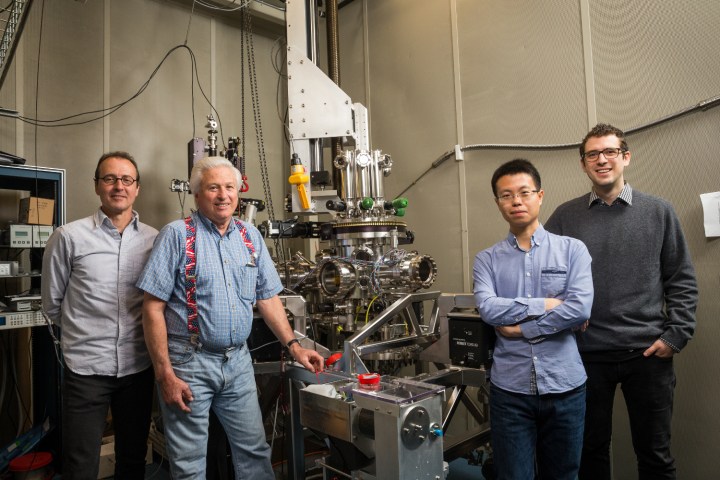
What’s hard to imagine is that everything we use and access on a PC is nothing more than ones and zeroes. The smallest form of data is a bit, which either has the value of “1” (on) or “0” (off). A group of bits is called bytes, and from there you move up in size to kilobits, kilobytes, megabits, megabytes, gigabits, gigabytes, terabytes, and so on. Thus, despite what users see and hear on their devices, it’s all still a bunch of ones and zeros.
The atom used in the world’s smallest magnet is from the chemical element olmium (Ho). As shown below, this atom is attached to a magnesium oxide surface so that the magnetic north and south poles of the atom stay in one position. This prevents the magnet from changing its position when other magnets are nearby. One magnetic pole defines the “1” value and the other defines the “0” value.

In the data writing process, IBM’s custom scanning tunneling microscope (pictured at the top) packs a sharp metal needle that zaps the atom to flip its magnetic poles, changing it between “1” and “0.” The data reading process uses the same instrument to determine the atom’s digital value by measuring the magnetic current passing through the atom. However, IBM’s microscope requires liquid nitrogen cooling so the atoms can be written and read, and an extreme vacuum environment to block out air molecules and other “contaminants.”
IBM Research scientists demonstrated that two magnetic atoms divided by 1 nanometer of space could be written separately. That distance equals to a millionth the width of a pin head, and indicates that magnetic storage solutions could be 1,000 times denser than today’s hard drives and NAND-based solid state drives. That could lead to storing the entire iTunes library of 35 million songs on a credit card-sized device.
Christopher Lutz, a nanoscience researcher at IBM Research, indicated that the new discovery may be ideal for data centers that rely on magnetic storage devices (hard drives, tape drives) to house incredible amounts of information. Generally available devices like smartphones, tablets, and most super-slim notebooks rely on NAND-based memory that doesn’t depend on magnetism or moving parts. That said, there’s a general shift away from magnetic storage devices due to the speed and reliability of flash-based storage.
But the discovery could lead to a new type of magnetic storage device. IBM Research talks more about its discovery in the latest publication of Nature, the international weekly journal of science.


